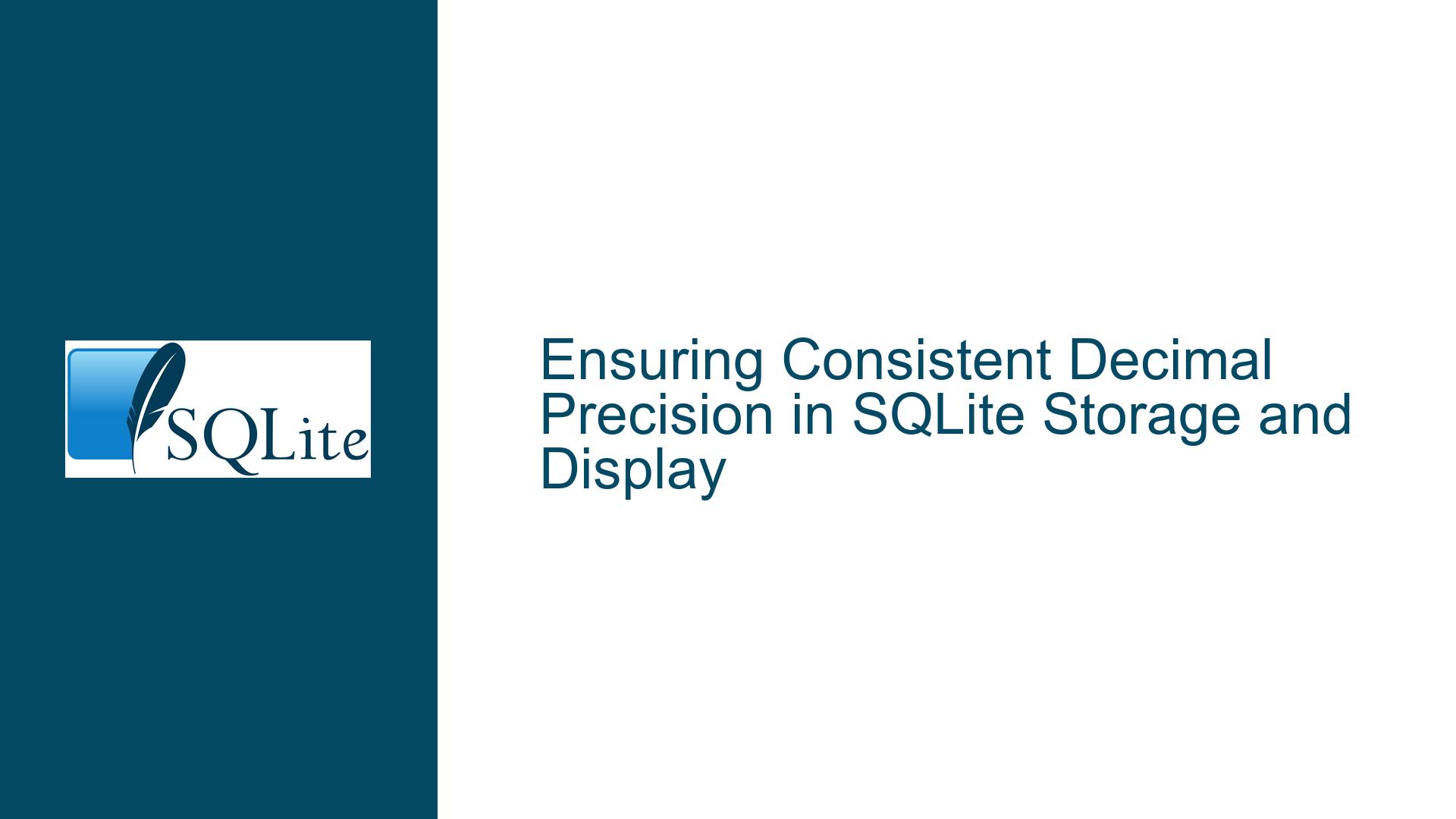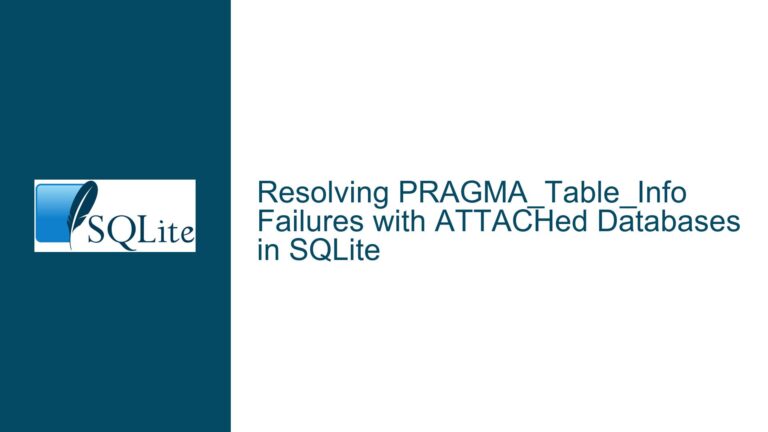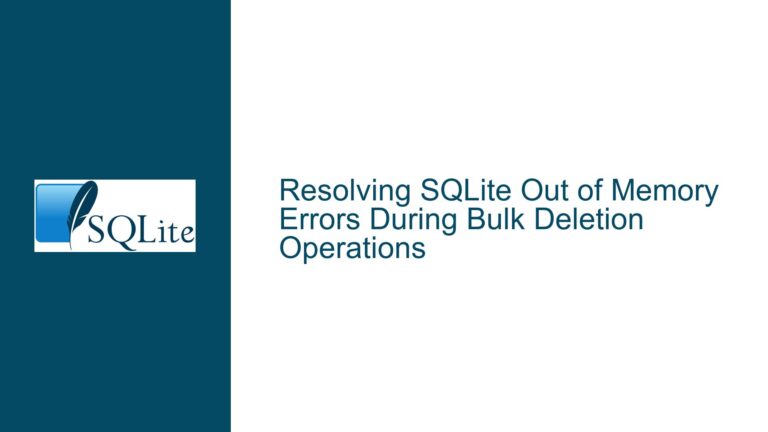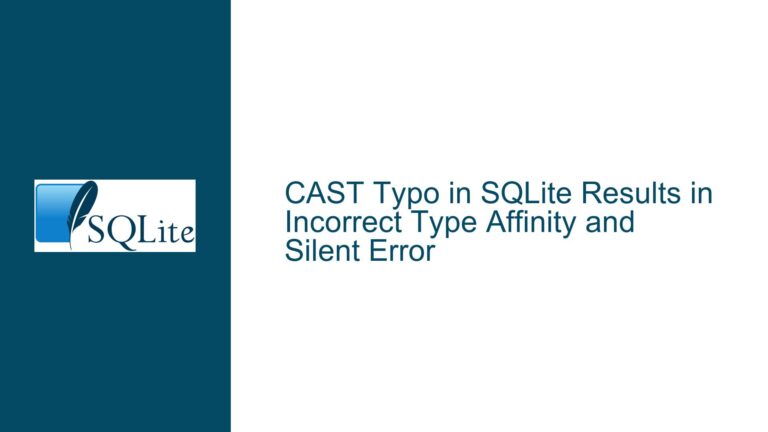Ensuring Consistent Decimal Precision in SQLite Storage and Display
Understanding the Need for Two Decimal Places in SQLite Storage
The core issue revolves around the storage and display of numeric values in SQLite, specifically ensuring that numbers are stored and displayed with exactly two decimal places. This requirement often arises in financial applications, where precision is critical, and values like 200.00 must be distinguished from 200.0 or 200. SQLite, being a lightweight and flexible database, does not inherently enforce decimal precision in storage, which leads to confusion when users expect specific formatting at the database level.
SQLite stores numeric values using a dynamic typing system, where the storage class of a value is determined by its representation rather than a fixed schema. This means that a value like 200.00 is stored as a floating-point number, and SQLite does not differentiate between 200.00, 200.0, or 200 in storage. The distinction between these values is only relevant during display or application-level processing. This behavior is by design, as SQLite prioritizes flexibility and efficiency over strict type enforcement.
However, this flexibility can lead to misunderstandings, especially when users expect the database to preserve formatting details like trailing zeros. For example, storing 200.00 in SQLite and retrieving it later might result in 200.0 or 200, depending on how the value is accessed or displayed. This discrepancy is not a bug but a consequence of SQLite’s storage model, which treats all numeric values as interchangeable unless explicitly formatted.
The confusion is further compounded when users attempt to enforce formatting at the storage level, such as by storing values as strings. While this approach ensures that the exact representation is preserved, it introduces other challenges, such as the inability to perform arithmetic operations directly on the stored values. This trade-off between precision and functionality is a key consideration when designing a solution for this issue.
The Pitfalls of Storing Numeric Values as Strings
One proposed solution to the problem of preserving decimal precision is to store numeric values as strings. For example, instead of storing 200.00 as a floating-point number, it could be stored as the string "200.00". This approach ensures that the exact representation is preserved, including trailing zeros. However, this method comes with significant drawbacks that must be carefully considered.
Storing numeric values as strings prevents the database from performing arithmetic operations directly on the stored data. For example, if 200.00 and 300.00 are stored as strings, attempting to add them together would require converting the strings back to numeric values, performing the calculation, and then converting the result back to a string. This process is not only inefficient but also prone to errors, especially when dealing with large datasets or complex calculations.
Additionally, storing numeric values as strings can lead to inconsistencies in data representation. For example, the strings "200.00", "200.0", and "200" are all distinct, even though they represent the same numeric value. This distinction can cause issues when querying or comparing values, as string comparisons are based on character sequences rather than numeric equivalence. For instance, a query searching for "200.00" would not match "200.0" or "200", even though they represent the same number.
Another concern is the increased storage requirements for string-based numeric values. Floating-point numbers are typically stored in a compact binary format, while strings require additional space to store each character. This difference can become significant when dealing with large datasets, leading to increased storage costs and slower performance.
Finally, storing numeric values as strings can complicate data validation and integrity checks. For example, ensuring that a string contains a valid numeric value with exactly two decimal places requires additional validation logic, which can be error-prone and difficult to maintain. This added complexity undermines the simplicity and reliability that SQLite is known for.
Best Practices for Handling Decimal Precision in SQLite
To address the issue of decimal precision in SQLite, it is essential to separate the concerns of storage and display. SQLite is designed to store numeric values efficiently, and formatting should be handled at the application level. This approach ensures that the database remains performant and flexible while allowing for precise control over how values are presented to users.
One effective strategy is to use SQLite’s PRINTF function to format numeric values during retrieval. For example, the query SELECT PRINTF('%.2f', column_name) FROM table_name ensures that all values in column_name are displayed with exactly two decimal places. This method preserves the efficiency of numeric storage while providing the desired formatting at the application level.
Another approach is to use integer arithmetic to represent values with fixed decimal precision. For example, instead of storing 200.00 as a floating-point number, it could be stored as the integer 20000, with the understanding that the last two digits represent the decimal portion. This method allows for precise arithmetic operations while maintaining consistent decimal precision. However, it requires careful handling of multiplication and division to avoid rounding errors.
For applications that require strict enforcement of decimal precision, such as financial systems, it may be necessary to implement additional validation and formatting logic at the application level. This could include custom data types or libraries that handle decimal arithmetic with exact precision. While this approach adds complexity, it ensures that the application’s requirements are met without compromising the database’s performance or flexibility.
In summary, the key to handling decimal precision in SQLite is to recognize the distinction between storage and display. By leveraging SQLite’s built-in functions and implementing appropriate formatting logic at the application level, it is possible to achieve the desired precision without sacrificing the database’s efficiency or flexibility. This approach aligns with SQLite’s design philosophy and ensures that the database remains a reliable and performant solution for a wide range of applications.






